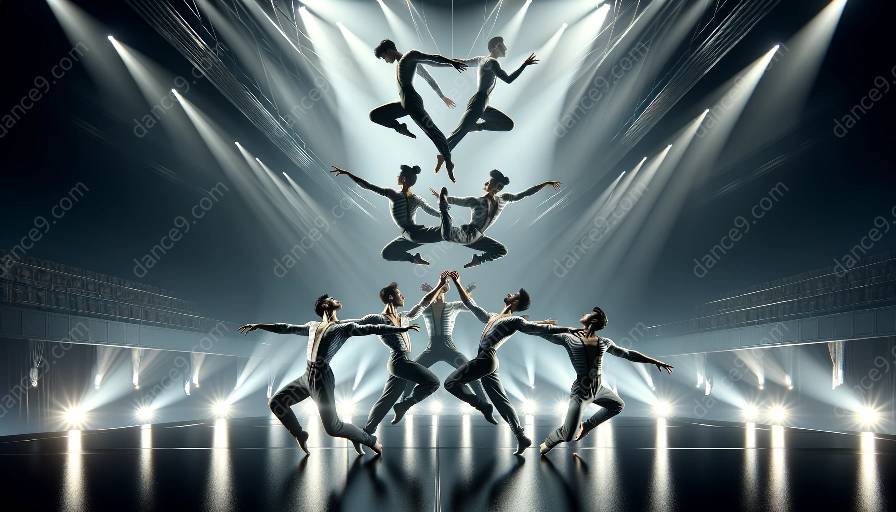If you've ever witnessed a breathtaking acrobatic and dance performance, you know the unique blend of physical prowess, coordination, and storytelling that goes into creating these stunning spectacles. The art of choreographing acrobatic and dance performances involves a delicate balance of creativity, technical skill, and teamwork to produce seamless and captivating shows that leave audiences in awe.
Choreographing acrobatic and dance performances requires an understanding of both acrobatics and dance, as well as the ability to merge the two seamlessly. This involves careful planning, innovative movement sequences, and a keen eye for visual composition.
Understanding the Basics
At the core of choreographing acrobatic and dance performances is the fusion of movement and storytelling. Choreographers must have a clear vision for their piece and a deep understanding of the skills and abilities of the performers. They need to envision how each movement contributes to the overall narrative and emotional impact of the performance.
Acrobatic and dance performances often integrate elements of agility, strength, flexibility, and balance. Choreographers must consider each of these elements when designing routines and sequences. They need to craft movements that showcase the performers' abilities while also harmonizing with the music and enhancing the overall aesthetic.
Techniques and Approaches
Choreographers employ various techniques to bring their vision to life. They may use improvisation sessions to explore movement possibilities and develop organic sequences that capture the essence of the performance. Furthermore, they often collaborate closely with acrobats, dancers, and other creative professionals to refine the choreography, ensuring that it aligns with the capabilities and artistic sensibilities of the performers.
Music plays a crucial role in choreographing acrobatic and dance performances. Choreographers carefully select and integrate music that complements the movements and conveys the intended mood and atmosphere. Additionally, they might utilize rhythm, tempo, and dynamics to create impactful moments and build tension throughout the performance.
Creating Spectacles
Choreographing acrobatic and dance performances is as much about creating visually stunning spectacles as it is about storytelling through movement. Choreographers work with lighting designers, costume designers, and set designers to craft immersive environments that enhance the performance's visual appeal.
Another critical aspect of choreography is safety. Given the physical nature of acrobatics, choreographers must prioritize the performers' well-being by ensuring that the choreography is designed with safety measures in mind. They need to consider factors such as equipment, rigging, and space to mitigate the risks associated with acrobatic elements.
Teaching the Craft
For those interested in pursuing classes in dance and acrobatics, learning about the art of choreography is a valuable part of the curriculum. Aspiring choreographers can benefit from comprehensive training that delves into the creative, technical, and practical aspects of designing acrobatic and dance performances. By understanding the principles and processes behind choreography, students can develop their artistic voice and contribute to the evolution of this dynamic art form.
Choreographing acrobatic and dance performances is a multi-faceted endeavor that demands a deep appreciation for movement, music, and visual expression. It is an art form that continues to push boundaries, inspire creativity, and captivate audiences worldwide.













































































